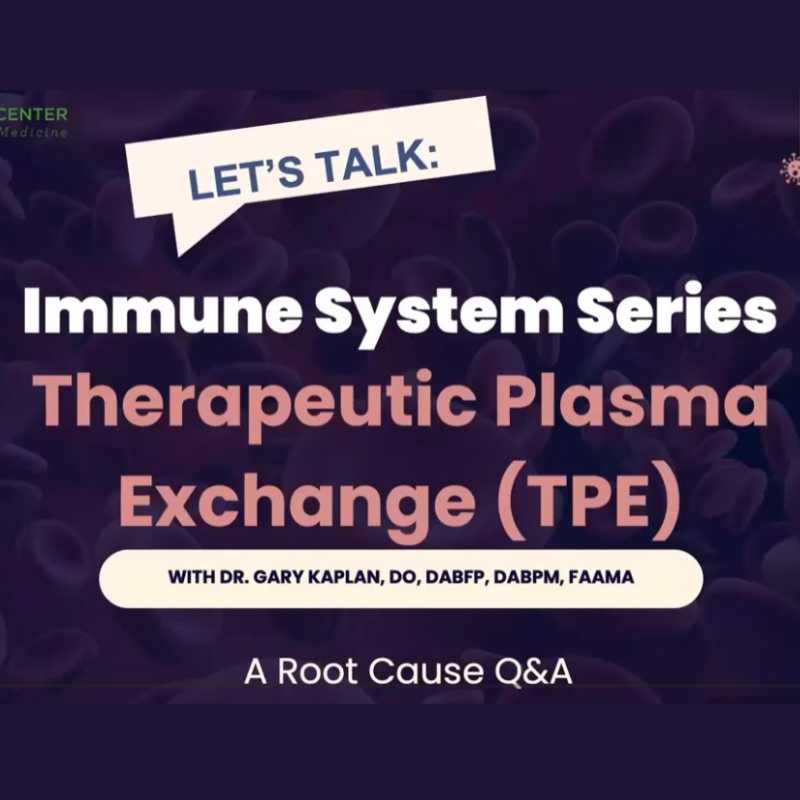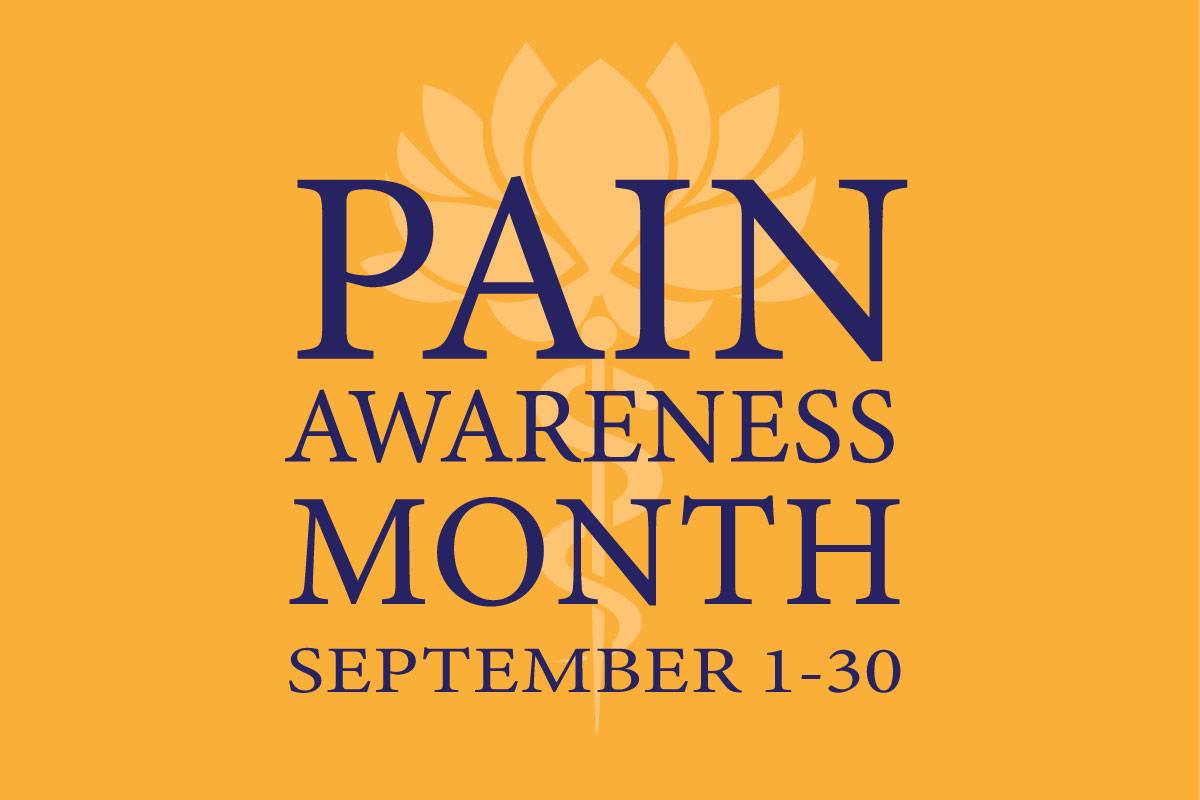
5 Ways We Can Keep Your Immune System Strong
December 10, 2025/by Kaplan Center
Want to Take Your Workout to the Next Level Next Year? These Tips Can Help
December 8, 2025/by Kaplan Center
Dr. Kaplan’s Dos and Don’ts of the Holiday Season
December 3, 2025/by Kaplan Center
Let’s Talk Webinar – A Root Cause Q&A
December 2, 2025/by Kaplan Center
Navigating Holiday Meals with Gut Issues: Simple Tips for a Comfortable Season
December 1, 2025/by Chardonée Donald, MS, CBHS, CHN, CNS, LDN
Craniosacral Therapy for TMJ | Say Goodbye to the Daily Grind
November 19, 2025/by Patricia Alomar, M.S., P.T.
From Compassionate Care to Personal Healing: A Letter to My Patients
November 18, 2025/by Kaplan Center
8 Steps to a Healthier Gut—and a Longer, Healthier Life
November 18, 2025/by Kaplan Center
Mid-Life Irritability & Fatigue Improved by Hormonal Balancing
November 13, 2025/by Lisa Lilienfield, MD
From Challenges to Change: Dr. Kaplan on Healthcare’s Biggest Challenges
October 29, 2025/by Kaplan Center
Overlooked Dangers of Mold Exposure and How to Stay Safe – Dr. Kaplan Talks to WUSA9
October 27, 2025/by Kaplan Center
Let’s ‘Fall’ Into Wellness: A Nutritionist-Approved Immune-Boosting Recipe for Cold and Flu Season
October 13, 2025/by Chardonée Donald, MS, CBHS, CHN, CNS, LDN
PANS/PANDAS – When Sudden Symptoms Signal Something More
October 9, 2025/by Kaplan Center
Beating Burnout, A Nutritionist’s Perspective
October 1, 2025/by Chardonée Donald, MS, CBHS, CHN, CNS, LDN
3 Things That Can Happen After Stopping GLP-1s
September 11, 2025/by Chardonée Donald, MS, CBHS, CHN, CNS, LDN
What Families Need to Know About COVID and Flu Season
September 3, 2025/by Kaplan Center
September is Pain Awareness Month
September 1, 2025/by Kaplan Center
Dr. Kaplan Spoke to Northern Virginia Magazine About COVID, Flu, and Immunity — Here’s What You Should Know
August 14, 2025/by Kaplan Center
“Why Do I Feel Like Crap?”: The Overlap Between Long COVID and Perimenopause
July 30, 2025/by Kaplan Center
Why People Are Turning to EMDR (and Why You Might Want to Too)
July 23, 2025/by Kaplan CenterAre you looking to improve your overall wellness?
Personalized care you can trust.
Our integrative, non-surgical treatment approach is highly successful in maintaining wellness and also treating chronic pain and illness. For more than 30 years, we have delivered superior, cutting-edge health care in the Washington, DC area.
QuickLinks
Contact Information
Tel: 703-532-4892
Fax: 703-237-3105
6829 Elm Street, Suite 300
McLean, Virginia 22101
Map It
Hours of Operation
Mon – Thu : 8 am – 5 pm, ET
Fri : 8 am – 12 pm, ET
5 Questions to Ask Before Selecting Your Insurance Plan
/in News/by Kaplan CenterDear Patients,
October through December is typically open season for choosing an insurance plan for the upcoming year. When selecting a plan with an eye to going out of the plan network (e.g. The Kaplan Center) there are important pieces of information to know in order to make an informed decision.
Here are 5 questions to ask an insurance provider before selecting your plan.
Also, please think back to your experience this year with your current insurance company and ask yourself a few more questions:
Dealing with your insurance company should not be your part time job, though for some that’s what it has become.
The way insurance companies operate these days is not as cut and dry as it was a decade ago, and it is likely to get worse. Frankly, some carriers are more difficult to deal with than others and if you have a choice, please make a smart, informed choice. This decision should be based on:
1) the information you gather about what the plans offer (including prescription coverage for medications that you take) from available documents describing the plan – or better yet, the plan contract,
2) talking to co-worker experiences, and
3) any direct inquires you make to the insurance company.
If your employer offers FSA (flexible spending account) you should consider taking advantage of your FSA options. It is a terrific, easy way to save on taxes and spread out that portion of your healthcare cost over the year if you are able to estimate your out of pocket liability for the year.
If you have any questions, please feel free to talk to me. I can be reached by phone at 703-532-4892, ext. 603.
June Guzdowski
Billing Director, Kaplan Center for Integrative Medicine
Low-Dose Naltrexone: A Little Known, But Effective Treatment For Chronic Pain
/in Treatments/by Kaplan CenterLow-dose naltrexone (LDN) is often confused with naltrexone, which is a pharmaceutical medication used in doses of 50 mg or more to treat alcohol and narcotic pain pill addiction or other opiate abuse. Low-dose naltrexone is a specially compounded capsule of 1.5 to 4.5 mg of naltrexone to help the body combat chronic illness states. It must be specially made by a reliable compounding pharmacist.
LDN acts by reducing inflammation in the brain caused by over-active microglia.
Microglia are a type of glial cell of the Central Nervous System (CNS) and an important line of defense. When there is an assault on the CNS, the microglia are activated and release inflammatory substances to destroy the foreign invaders. When the assault is over, the microglia go back to their normal resting state. However, when they react too often – from repeated injury, infection, toxins, traumas, or emotional blows – they can sometimes remain hyper-active keeping the brain in a chronic state of inflammation. Research on LDN suggests that it’s able to suppress the inflammatory response of the microglia.
Some of the inflammatory conditions that have shown to benefit from LDN include fibromyalgia, multiple sclerosis, Crohn’s disease, complex regional pain syndrome, and cancer.
You can read more about inflammation of the brain and central nervous system as a major component of pain and illness in Dr. Gary Kaplan’s book Total Recovery.
LDN also improves the body’s immune system by blocking opioid receptors.
This, in turn, boosts the body’s endogenous endorphins, our natural painkillers, and important regulators of cell growth.
You can read more about low-dose naltrexone for auto-immune disorders, and other illnesses at www.lowdosenaltrexone.org.
Because low-dose naltrexone interferes with opiates you cannot continue on narcotic pain medication.
Otherwise, it has virtually no side effects and is very well tolerated by most patients. Most people notice an increase in dreaming, and some people notice a bit of sleep disruption during the initial few days of treatment but this improves over time.
Questions? Give Us a Call!
703-532-4892 x2
Questions about LDN? Call and speak with a nurse today. Call 703-532-4892, ext. 2.
Patient Q&A on Low Dose Naltrexone:
Q: Does the Kaplan Center offer low-dose naltrexone treatment for fibromyalgia patients? I know of a number of patients with fibromyalgia, MS, and Hashimoto’s thyroiditis who claim to have seen improvement with LDN.
A: Yes, Low-dose naltrexone is a prescribed therapy for a variety of conditions that we treat here at The Kaplan Center. If you would like to learn more about low-dose naltrexone, call the office and schedule an appointment to discuss the possible benefits for your health condition.
Q: I am allergic to NSAIDS, so would I be allergic to this?
A: Low-dose naltrexone is not an NSAID (non-steroidal anti-inflammatory), therefore any allergy to such would not apply. The higher doses of naltrexone can rarely cause liver toxicity, depression, and somnolence, but the low dose naltrexone or LDN has fewer if any side effects in our experience.
Q: The standard dose appears to be 4.5 mg in almost all the information I can find. There are a few chronic pain MDs in the U.S. that seem to be using higher doses with success — a couple say to go up as high as 10 mg while another one is using it up to 4.5 mg 3xday with great success for those who do not respond to one dose of 4.5 mg. Do you have any thoughts on this? What I’ve read is that one should not give up on this medication if not getting benefits at 4.5 mg.
A: At a low dose, the side effects are minimal. Higher doses can cause sleep disturbances and may cause elevation of liver enzymes. Although I don’t usually go higher than 4.5 mg, most likely the doses you are talking about – 10-14 mg – are far from the 50 mg or higher dose that is used to block opioid overdose, and are therefore probably safe. I don’t see any research on the efficacy of using higher doses, however.
Q: I have read that Low-Dose Naltrexone (LDN) should not be taken by people who have had organ transplants. Does this include an artificial aortic heart valve? Also, does it affect INR levels? And should Warfarin dosage need to be readjusted?
A: The short answer is that low-dose naltrexone should not be taken by someone on immunosuppressant drugs because it boosts the immune system by stimulating the body’s own endorphins. There are no known interactions with Coumadin but it is always a good idea to check the INR more often when starting a new medication. Therefore if someone has a valve replacement, yet is not on an immunosuppressant, LDN should be safe.
We are here for you, and we want to help.
Our goal is to return you to optimal health as soon as possible. To schedule an appointment please call: 703-532-4892 x2
Purslane: A Super "Weed" Worth Trying
/in Nutrition/by Kaplan CenterIf you haven’t heard of purslane it’s not very surprising. What is surprising is that despite it being so darn good for you most mainstream grocers fail to keep it on the shelf.
It is estimated that human cultivation of the plant goes back 4000 years. It has long been used as a medicinal herb in Chinese medicine and is still a commonly used vegetable in Asia, Europe, Africa, and the Middle East. It grows abundantly across the globe and can be found in crop fields, gardens, orchards, and vineyards.
Here, purslane is often mistaken as a nuisance weed, but in truth, it is a nutritional powerhouse on par with many of the vegetables we find at the grocery store. Its vast nutritional benefits include:
Questions? Give Us a Call!
703-532-4892 x2
Note: Like parsley, spinach and other leafy greens, purslane contains oxalic acid, a naturally occurring acid found in vegetables. Oxalic acid binds with calcium, reducing its absorption and also forms compounds called calcium oxalate and iron oxalate. These compounds can be naturally eliminated by the body by most people; however, for some, they can produce kidney stones and possibly other health issues. Therefore people who are prone to kidney stones should limit the consumption of foods that contain oxalic acid, particularly in its raw form. Cooking or steaming vegetables with oxalic acid can reduce the amount present.
In order to prevent oxalate from binding to calcium is to eat foods known to contain oxalic acid 2 hours apart from dietary calcium sources. Doing this will allow enough time for the body to absorb it.
How to use it
Grab a stem, take a bite and enjoy the tangy crunch! Fresh purslane’s texture and flavor make it a great addition to any salad. It also holds up well when sautéed and can be used in soups and stews. Or, try substituting purslane in your favorite pesto recipe! Many recipes call for removing the leaves from the stems, but there is no harm in keeping them in.
Farmers’ markets or farm stands are your best bet in finding purslane. It can also be found at some Whole Foods Markets.
References:
[i] Vitamin A Fact Sheet for Health Professionals, National Institutes of Health, Office of Dietary Supplements
[ii]National Nutrient Database for Standard Reference Legacy Release, United States Department of Agriculture Agricultural Research Service
We are here for you, and we want to help.
Our goal is to return you to optimal health as soon as possible. To schedule an appointment please call: 703-532-4892 x2